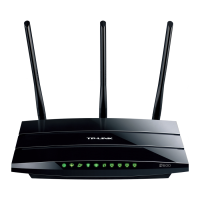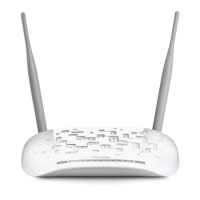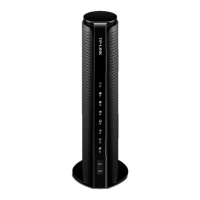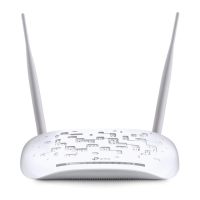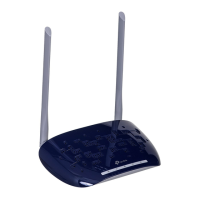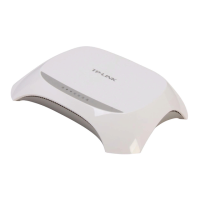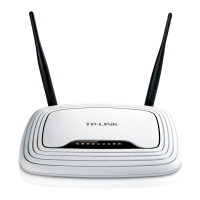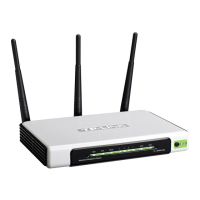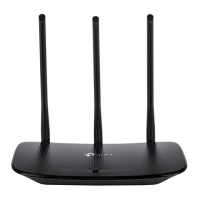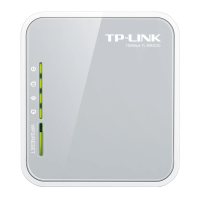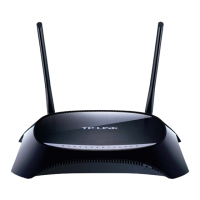13Chapter 2 . Congure Touch P5 as a Router
2. Select the wireless network 2.4GHz or 5GHz and select Hide SSID, and your SSID will not broadcast. Your SSID won’t
display when you scan for local wireless network list on your wireless device and you need to manually join the network.
To change the security option:
Select the wireless network 2.4GHz or 5GHz and choose your Security Type, and enter the corresponding encryption
parameters, your Touch P5 provides four options:
• No Security: Select this option to disable the wireless security.
• WPA/WPA2-Personal (Recommended): Select this option to enable the standard authentication method based on a Pre-
shared Key (PSK), also called passphrase. Its security level is the highest.
• WPA/WPA2-Enterprise: Select this option to enable the more advanced authentication method using a RADIUS (Remote
Authentication Dial In User Service) server. If selected, WPS function will be disabled.
• WEP: Select this option to enable basic authentication method if any of your client devices can only access the wireless
using WEP (Wired Equivalent Privacy).
To change the mode, channel width, channel or transmit power:
Select the wireless network 2.4GHz or 5GHz.
Mode: Select the desired mode.
• 802.11n only: Select only if all of your wireless clients are 802.11n devices.
• 802.11g/n mixed: Select if you are using both 802.11b and 802.11g wireless clients.
• 802.11b/g/n mixed: Select if you are using a mix of 802.11b, 802.11g, and 802.11n wireless clients.
Note: When 802.11n only mode is selected, only 802.11n wireless stations can connect to your Touch P5. It is strongly
recommended that you select 802.11b/g/n mixed, and all of 802.11b, 802.11g, and 802.11n wireless stations can connect to
your Touch P5.
• 802.11ac only (For 5GHz): Select only if all of your wireless clients are 802.11ac devices.
• 802.11n/ac mixed (For 5GHz): Select if you are using both 802.11n and 802.11ac wireless clients.
• 802.11a/n/ac mixed (For 5GHz): Select if you are using a mix of 802.11a, 802.11n and 802.11ac wireless clients. It is strongly
recommended that you select 802.11a/n/ac mixed.
Channel Width: Select the channel width from the list. The default setting is Auto, which can adjust the channel width for your
clients automatically.
Channel: Select the channel you want to use from the list. This field determines which operating frequency will be used. It
is not necessary to change the wireless channel unless you notice interference problems with another nearby access point.
Transmit Power: Select either High, Middle, or Low to specify the data transmit power. The default and recommended setting
is High.
Advanced wireless settings:
Advanced wireless settings are for those have a network concept. If you are not familiar with the settings on this page,
it’s strongly recommended that you keep the provided default values; otherwise it may result in lower wireless network
performance.
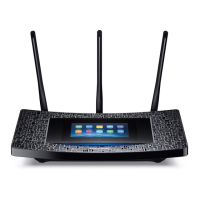
